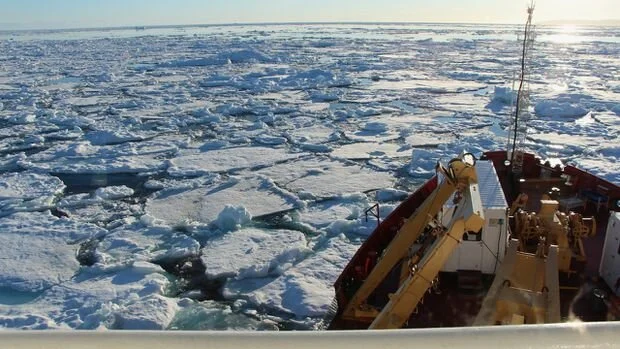One of the few amphibians that can survive the harsh winter conditions of boreal and subarctic areas is the wood frog, a prime example of organisms poised to feel the effects of climate change in the region. But these frogs need up to two months to develop from tadpoles and grow before the onset of summer. As the changing climate in the region shortens the window of time between snowmelt and the beginning of summer, frogs may be smaller when they emerge.
Nature Conservancy of Canada purchases land for protection in southern Alberta
The announcement comes a few months after the organization announced a $6.9-million campaign to save a 16.5-square-kilometre property called the Yarrow, which is also in southern Alberta but "a little farther north" from the latest project and just outside what's traditionally known as the Waterton Park Front. The Yarrow also features grasslands, wetlands, creeks, mixed forests and includes 27 wildlife species of provincial and national significance. There are two streams that provide fish habitat and transport water from Alberta's southern headwaters to rivers across the Prairies that flow to Lake Winnipeg and eventually Hudson Bay.
This rubber duck started a river race in Alberta and washed ashore in Russia
If rubber ducks could talk, one in particular would have an amazing adventure to tell. Two years ago, Vladimir Matusevitch was on holiday on the Arctic shores of the Rybachy Peninsula in northwestern Russia. Resting among the beach rocks, he noticed a grubby rubber duck inscribed with the number 1417.
A TALE OF THREE WATERSHEDS: WHAT WE KNOW — AND DON’T KNOW — ABOUT THE HEALTH OF CANADA’S FRESHWATER
Canada is famously home to 20 percent of the world’s freshwater — but how well are we stewarding this supply? WWF-Canada recently reassessed the health of our country’s 25 watersheds to better understand how they’re responding to threats from pollution, habitat loss and climate change. Our 2020 Watershed Reports found that 26 per cent of Canadas’s 167 sub-watersheds received a score of Good or Very Good, which is good or very good news! But what’s bad, or possibly very bad, is that nearly 60 per cent of these sub-watersheds received no score at all because they remain Data Deficient. In other words, we just don’t know. This lack of data is concerning as we need a complete picture to determine which areas need dedicated efforts to protect our freshwater ecosystems.
First Nations communities pursue clean drinking water through the courts
This time of year, with the temperature plunging below -20 C, a snowmobile and an ice chisel are required tools for anyone in Tataskweyak Cree Nation in need of fresh water. There’s the bottled stuff, trucked into town courtesy of the federal government, but the weekly shipment of 1,500 cases is only sufficient to meet basic consumption needs. For cleaning, cooking and basic hygiene water, many residents need a supplementary source. And rather than use their tainted tap water, they follow a snowmobile trail several kilometres to Assean Lake, pails in hand.
Potential damage is being downplayed in latest Alberta oil pipeline leak
Less than two months after a spill at an oil pipeline dumped 900,000 litres of contaminated water–so called “produced water”–in northwestern Alberta, there’s been another spill in the oil-rich province. The latest spill, reported at 2 p.m on Christmas Day by a local landowner, occurred near Drayton Valley, a community about 130 kilometres southwest of Edmonton, the province’s capital city. Drayton Valley was the site of a spill–the result of a ruptured pipeline–that dumped 40,000 litres of crude oil into a local creek in August, 2019.
Pipeline spills about 400,000 litres, some enters North Saskatchewan River
Contaminated water that leaked from an oilfield pipeline on Christmas Day has entered the North Saskatchewan River but has had no detectable impact on it, says a spokesman for Calgary-based oil and gas producer ARC Resources Ltd. The spill was reported by a local landowner at about 2 p.m. last Friday, said Sean Calder, ARC's vice-president of production, in an interview on Tuesday. "We had guys on site within about an hour and then the pipeline was shut in by 4 p.m., I believe," he said.
Canadian Arctic awash in microplastics, study finds
In the first large-scale survey of its kind in the region, researchers sampled more than 30 locations across the eastern Arctic and Hudson Bay and were able to detect microplastics nearly everywhere they looked, including in surface waters, marine sediments and in the guts of zooplankton – the tiny, floating organisms that occupy the base of the Arctic food chain. And while the long-term effects of the materials on the environment and on human health remain largely unknown, the results suggest widespread exposure is becoming inescapable, even for people living in the most remote areas of the globe.









